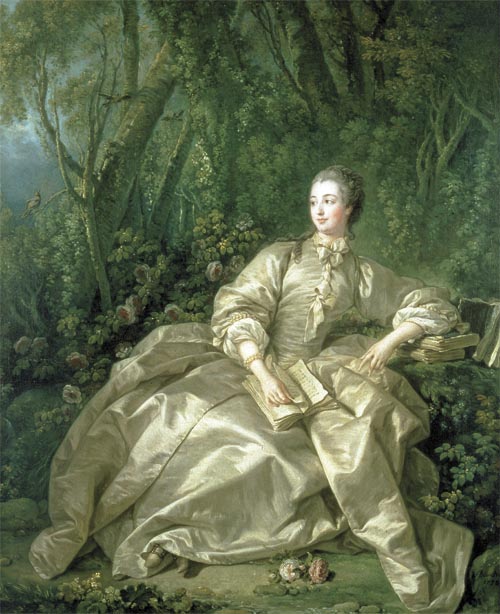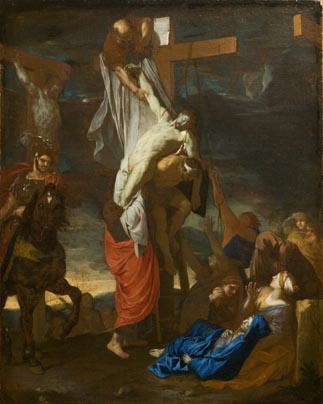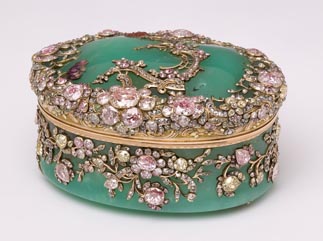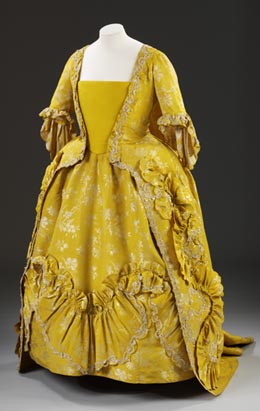Glimpse into the lives of Europe’s kings and queens

“Madame de Pompadour” by Francois Boucher
Have you ever daydreamed about stepping into Versailles during the time of Louis XVI and Marie Antoinette? Or wondered what the elaborate, jewel-encrusted accessories and attire of the European monarchy looked like at the height of their power during the 17th and 18th centuries?
Take a glimpse into the lives of European kings and queens and paintings during the Baroque and Rococo era by going to the National Museum of Korea in Yongsan, central Seoul. Until Aug. 28, the museum will hold a special exhibition titled “Princely Treasures: European Masterpieces 1600-1800 from the Victoria and Albert Museum.” During the exhibition, 101 selected items on loan from the Victoria and Albert Museum in London will be on display, including paintings, sculptures, ceramics, glass, furniture, clothing and accessories - all from the 17th and 18th centuries.
The works are from European countries, including France, Sweden, Spain and Portugal, and represent the distinct aesthetics of the era, now referred to as Baroque and Rococo styles.
According to the National Museum of Korea, the exhibition took 16 months to organize.
“Baroque era painting was heavily influenced by the Roman Catholic Church, in which the artworks emphasized the majesty and absolute strength of the king,” said Kim Young-na, director of the National Museum of Korea.
“The Rococo era, on the other hand, which followed the Baroque era, formed during the last stages of the Baroque period when the power of European monarchs weakened. Hence the style during this period was more ornate, fluid and feminine.”

“Descente de Croix” by Charles Le Brun
As the official chief mistress of Louis XV, Madame de Pompadour was a refined and highly educated woman who was an accomplished actress and musician as well.
“Madame de Pompadour is said to have loved reading. Furthermore, she always wanted to promote this image of herself as an intelligent, elegant woman that liked to read. So in many of her portraits, she is shown with a book in hand,” said Kim.
Boucher’s portrait shows the mistress in a light gold khaki colored dress, with a book on her lap as she sits down in front of a forest. Kim explained that unlike the Baroque era, Rococo era paintings were light and more fanciful, without the seriousness or emphasis of power that was apparent during the Baroque era.
“If you look at the tree branches and stalks in the paintings, you will see that they are lean and fluid-looking. Also, Madame de Pompadour’s face and her dress have a pretty glow of silver, pink and pastel. Everything during the Rococo era was light,” she added.

a snuff-box used by Friedrich II
“These carpets and tapestry featuring wartime scenes were commissioned by monarchs at the time to hang in their parlors,” said Yang Hee-jung, head curator for the exhibition. She added that the elaborately designed pistols and guns for Louis XV and George II were never fired.
Religious beliefs and the historical circumstances that resulted from religious conflict during the 17th and 18th centuries are shown in the exhibition’s third section, titled “Religious Splendor.” Here, the painting “Descente de Croix” by Charles Le Brun, in which Jesus Christ is being brought down from the cross, is featured alongside other religious works associated with not only Catholicism, which was dominant at the time, but also with Protestantism and Judaism.
In particular, the exhibition showcases important religious art from Spain, which was arguably the most powerful country in the Europe during the 17th century.

a gown from the 18th century Provided by Victoria and Albert Museum
“Spanish religious paintings during the Baroque period, including those by Diego Velazquez, were intense, dark and realistic,” said Kim.
Upon walking into the fourth section of the exhibition, titled “Display,” a recreation of the Hall of Mirrors inside the Palace of Versailles can be seen alongside furniture, textiles and ceramics that were used by the French monarchy and nobility for decorative or social purposes.
One of the highlights of this section is a deep emerald green snuff-box decorated with pink and ivory colored diamonds used by Friedrich II, king of Prussia.
The final section, titled “Fashion and Personal Adornment,” features the clothing, jewelry and personal accessories of the European monarch. The centerpiece in the display is a mustard-yellow ball gown worn during the mid-18th century, with a luxurious draping decoration on the backside.
*The exhibition “Princely Treasures: European Masterpieces 1600-1800 from the Victoria and Albert Museum,” runs until Aug. 28 inside the special exhibition hall at the National Museum of Korea in Yongsan, central Seoul. Hours are 9 a.m. to 6 p.m. on Tuesdays, Thursdays and Fridays, 9 a.m. to 9 p.m. on Wednesdays and Saturdays, and 9 a.m. to 7 p.m. on Sundays. Ticket prices range from 5,000 won ($4.60) to 10,000 won. For more information, visit www.museum.go.kr or call (02) 2077-9275.
By Cho Jae-eun [jainnie@joongang.co.kr]
한글 관련 기사 [중앙일보]
17~18세기 유럽 귀족들 치장에 집중한 까닭은
국립중앙박물관 특별전
오늘날 영국 여왕은 먹고 남은 시리얼을 밀폐용기에 보관한다지만 시민사회가 대두되기 직전인 17~18세기 유럽의 왕실은 화려함의 극치를 달렸다. 국립중앙박물관은 영국 빅토리아 알버트박물관 소장품 특별전 ‘바로크, 로코코 시대의 궁정문화’를 3일 개막한다. 당시 유럽 지배계층이 향유했던 문화를 보여주는 조각·회화·자기·금속공예·가구·직물·복식 등 유물 101점을 전시한다.
전시는 모두 5개 섹션으로 나뉜다. 첫 번째 섹션인 ‘유럽 궁정의 미술 후원’에선 프랑스 루이 15세의 정부였던 퐁파두르 후작부인 초상, 프로이센 프로드리히 대왕의 다이아몬드 장식 코담배갑 등이 나온다. 당시 유럽의 왕과 그의 여인들은 호화로운 선물을 장인에게 주문해 주고 받으면서 귀족 사회에 미적 기준을 제시했다. 귀족들 역시 손님들에게 개방된 공간이었던 집을 화려한 가구와 벽 장식으로 꾸몄다. 식민지 개척을 통해 세계 각지에서 들여온 값비싼 재료를 이용해 유럽 전역의 장인들이 한땀 한땀 매만진 장식품이다. 머리와 옷 역시 자신의 사회적 지위를 나타내는 것이기에 정성 들여 가꿨다. 남의 눈에 어떻게 보일까를 가장 신경 쓴 시대라 해도 과언이 아닐 것이다. 이러한 당시의 풍조는 전시 네 번째 섹션인 ‘실내 장식’ 코너와 마지막 섹션인 ‘패션과 장신구’에서 볼 수 있다.
예술로 전쟁을 미화하고 찬미했던 당시의 분위기를 보여주는 ‘권세와 영광’, 궁정의 일상과 예법을 지배했던 가톨릭 및 새롭게 떠오른 신교가 장식 미술에 어떻게 반영되었는지를 보여주는 ‘종교적 장엄’ 코너도 마련됐다. 전시는 8월 28일까지.










with the Korea JoongAng Daily
To write comments, please log in to one of the accounts.
Standards Board Policy (0/250자)